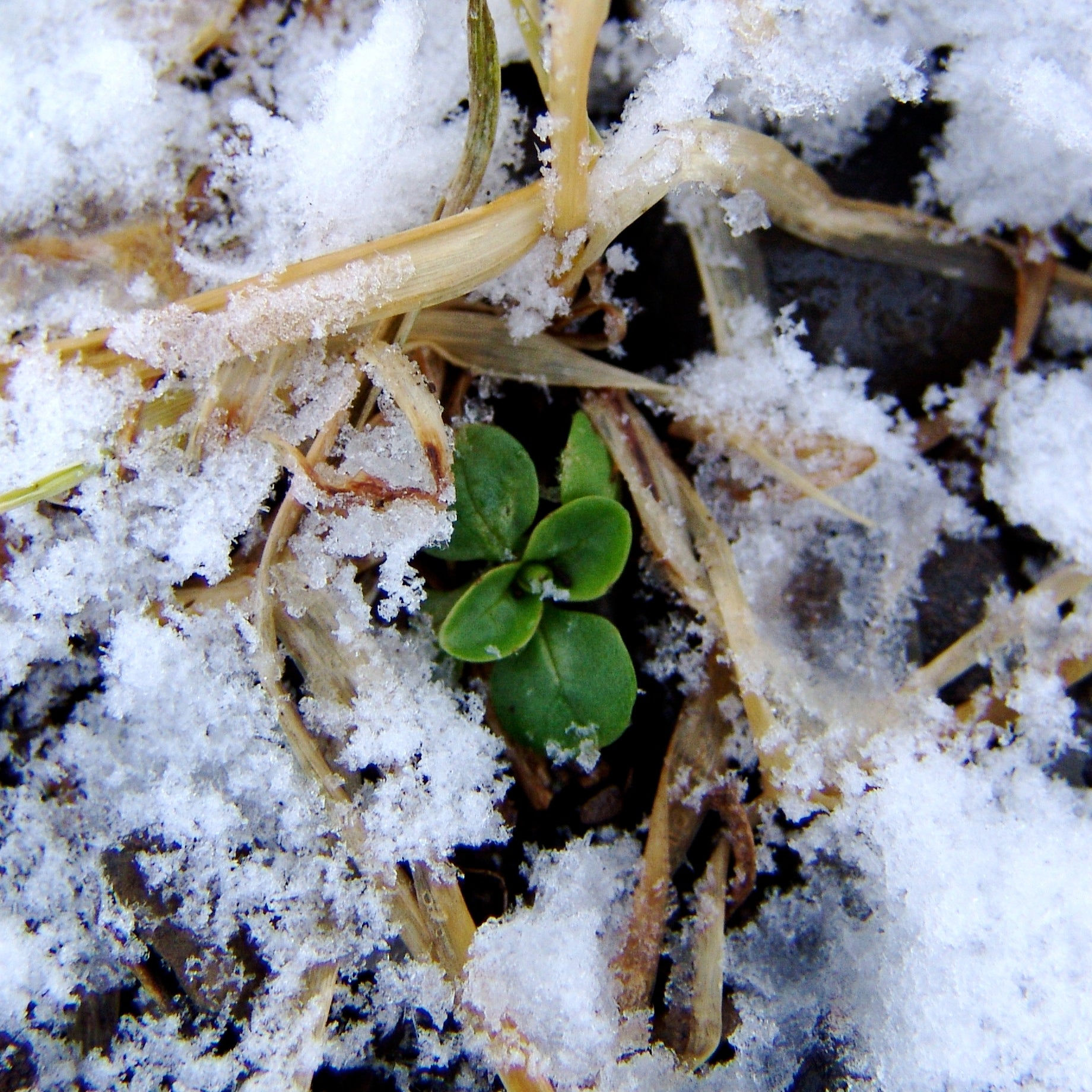Grow-How: Winter-Sown Seeds
Did you know you can sow in the snow? Starting seeds indoors is a garden rite of spring, but sowing outdoors can become a new winter ritual.
On our seed farm we use the term "winter sowing" to describe seeds that can be sown outdoors in the late fall or mid-late winter. These seeds will survive, or even benefit from, freezing and thawing. They’ll germinate early and be the first greens or earliest blooms of spring. Snow-sown seeds will surprise you!
Stratify, Naturally
When seeds come with instructions to "stratify," it indicates that a cold treatment is recommended to achieve the best germination. These varieties are often cold hardy biennial or perennial species that have adapted their reproduction cycle to withstand winter conditions. All of our familiar Northeast wildflowers, like Goldenrod, New England Aster, Teasel, Milkweed, and Dandelions have adapted to use winter’s cycles to their benefit. The cold, moist conditions break down the seed coat and this triggers germination in the spring when the conditions warm. Generally, you can stratify seeds by placing them in a moist towel in the refrigerator for 6-8 weeks. But nature does it better.
What to Sow in the Snow
We’re not talking about tomatoes or zinnias! For most heat-loving varieties, seed starting time comes just when you’re getting impatient for the end of winter. We have to start those seeds indoors to get a jump start or accept a later fruiting and blooming time when we direct sow after last frost. We also don't recommend sowing tender annuals or large seeds that are attractive to hungry rodents.
One way to figure out what might work is trying anything you've noticed is a strong volunteer in your garden in the spring. Here are the varieties we've found work well for us.
Reliable even in harsh winters:
Bloomsdale Spinach
Abundant Bloomsdale Spinach
Breadseed Poppy Mix
Mache
Evening Primrose
Johnny Jump Up
Morning Glories
Milkweed
Mostly works depending on severity of winter:
Chives
Garlic Chives
Calendula
Flashback Calendula
Works intermittently, best for mild winters:
Arugula
Beets
Chard
Borage
Onions
Moonflower
Balloon Vine
 Morning Glories waiting for spring.
Morning Glories waiting for spring.Put on Your Boots and Give it a Try
Winter-sown seeds are a way to get gardening, and harvesting, earlier. Okay, so you might not want to try winter sowing when there is 2 feet of snow on the ground or it’s -10 degrees, but you can do it on a snowy day when the ground is still bare in places. Depending on how severe a winter you have in your region, you can sow recommended varieties in the fall through the last month of winter.
The only planning you have to do with this method is to know what section of your garden is bare and relatively weed free. When sowing in the winter, choose a day when there is bare ground in the garden. If there is an inch or so of snow on the ground you can sweep that aside. Lightly sprinkle seeds over the surface, aiming for 4 inch spacing. You will want to over-sow by about 20% to make up for seed drift. In the spring, when you notice your first plants emerge, thin and transplant to give seedlings the room they need to grow. Be sure to pluck out any weeds that appear as well.
 Early spring spinach.
Early spring spinach.Your New Winter Gardening Ritual
Although there is a limit to what you can sow directly outdoors in the winter, the rewards are great. For the right varieties the cold treatment of nature will improve the germination and the early start will produce robust and healthy plants that will benefit from maturing in the cooler spring months. As you might imagine, the downside of this method is the lack of control. A particularly harsh winter might cause a lot of snow melt and run off, causing seeds to drift away.
So(w), during the next snow thaw, put on your muck boots and winter coat and try winter sowing some seeds. You’ll be grateful in the early spring when your first plants emerge, quite ahead of everything else, plus, the act of being in your winter garden will give you a new perspective on growing and might just lift your spirits.
Explore these related products:







